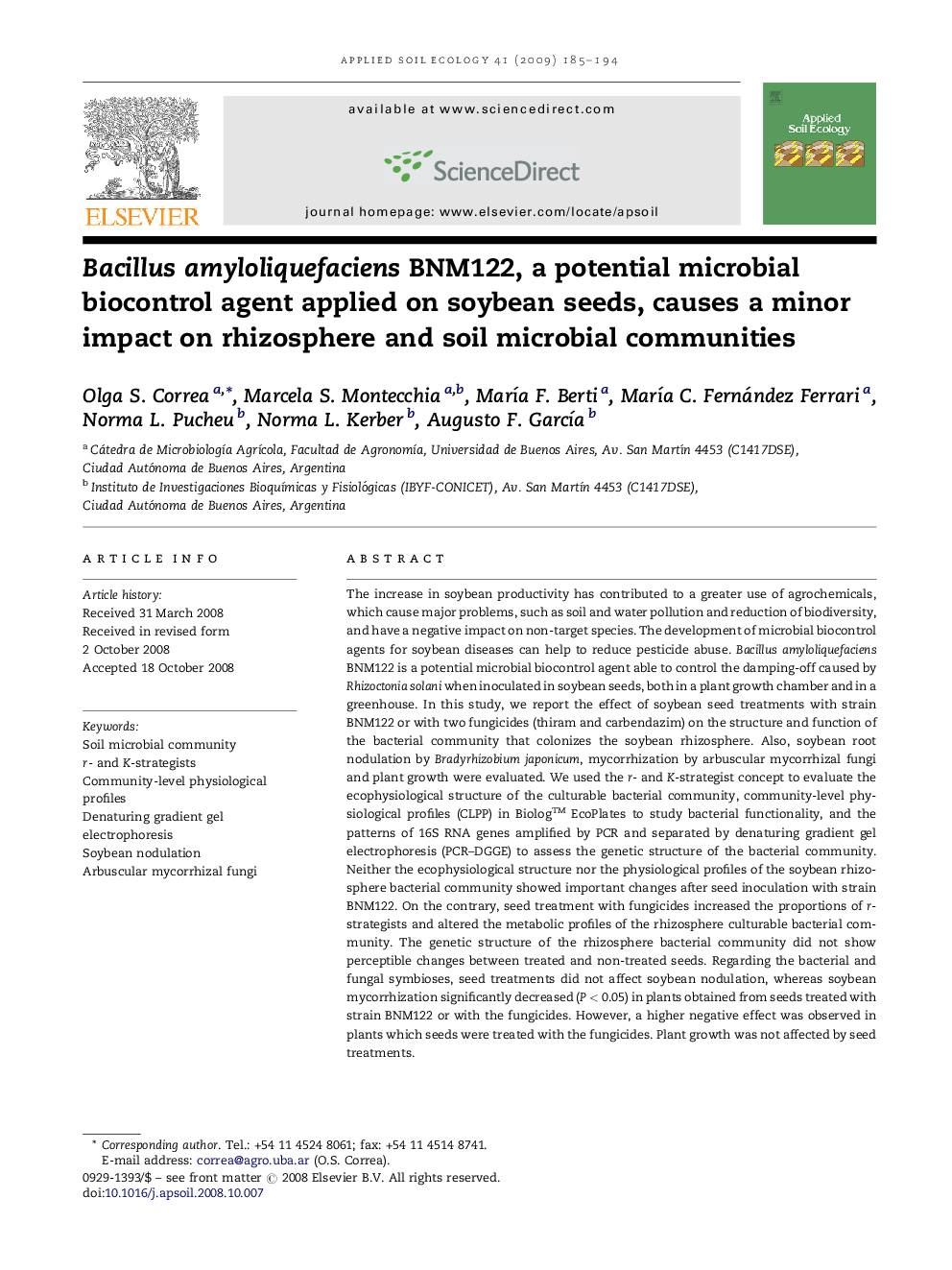| کد مقاله | کد نشریه | سال انتشار | مقاله انگلیسی | نسخه تمام متن |
|---|---|---|---|---|
| 4383079 | 1304247 | 2009 | 10 صفحه PDF | دانلود رایگان |

The increase in soybean productivity has contributed to a greater use of agrochemicals, which cause major problems, such as soil and water pollution and reduction of biodiversity, and have a negative impact on non-target species. The development of microbial biocontrol agents for soybean diseases can help to reduce pesticide abuse. Bacillus amyloliquefaciens BNM122 is a potential microbial biocontrol agent able to control the damping-off caused by Rhizoctonia solani when inoculated in soybean seeds, both in a plant growth chamber and in a greenhouse. In this study, we report the effect of soybean seed treatments with strain BNM122 or with two fungicides (thiram and carbendazim) on the structure and function of the bacterial community that colonizes the soybean rhizosphere. Also, soybean root nodulation by Bradyrhizobium japonicum, mycorrhization by arbuscular mycorrhizal fungi and plant growth were evaluated. We used the r- and K-strategist concept to evaluate the ecophysiological structure of the culturable bacterial community, community-level physiological profiles (CLPP) in Biolog™ EcoPlates to study bacterial functionality, and the patterns of 16S RNA genes amplified by PCR and separated by denaturing gradient gel electrophoresis (PCR–DGGE) to assess the genetic structure of the bacterial community. Neither the ecophysiological structure nor the physiological profiles of the soybean rhizosphere bacterial community showed important changes after seed inoculation with strain BNM122. On the contrary, seed treatment with fungicides increased the proportions of r-strategists and altered the metabolic profiles of the rhizosphere culturable bacterial community. The genetic structure of the rhizosphere bacterial community did not show perceptible changes between treated and non-treated seeds. Regarding the bacterial and fungal symbioses, seed treatments did not affect soybean nodulation, whereas soybean mycorrhization significantly decreased (P < 0.05) in plants obtained from seeds treated with strain BNM122 or with the fungicides. However, a higher negative effect was observed in plants which seeds were treated with the fungicides. Plant growth was not affected by seed treatments.It can be concluded that soybean seed treatment with B. amyloliquefaciens BNM122 had a lesser effect on soil microbial community than that with the fungicides, and that these differences may be attributed to the less environmental persistence and toxic effects of the strain, which deserve further studies in order to develop commercial formulations.
Journal: Applied Soil Ecology - Volume 41, Issue 2, February 2009, Pages 185–194